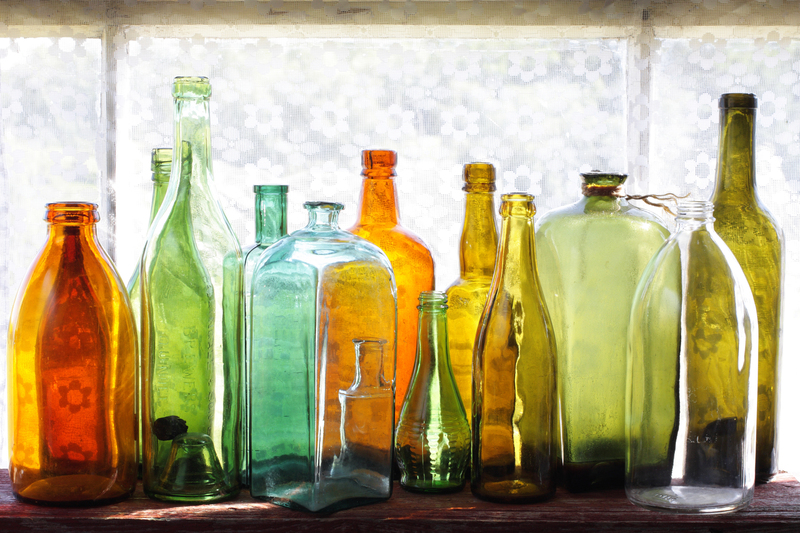Finding Sustainable Solutions for Microplastic Pollution
Posted on 26/06/2025
Introduction: Confronting the Microplastic Crisis
Microplastic pollution has emerged as one of the most pressing environmental issues of our time, infiltrating oceans, rivers, soils, and even the air we breathe. As awareness grows, the demand for finding sustainable solutions for microplastic pollution intensifies. Minimizing the spread and impact of these microscopic plastic fragments is fundamental for ecosystem health and human wellbeing. This article delves into the complexities of microplastics, explores their sources and consequences, and presents comprehensive, actionable strategies for mitigating their danger to our planet.

Understanding Microplastics: Sources and Impacts
What Are Microplastics?
Microplastics are tiny plastic particles, typically defined as being less than 5mm in size. These can be further divided into two categories:
- Primary microplastics: Manufactured to be small, such as microbeads in personal care products.
- Secondary microplastics: Resulting from the breakdown of larger plastic items through weathering, UV radiation, and physical abrasion.
Main Sources of Microplastic Pollution
The proliferation of microplastics originates from diverse sources, making comprehensive management challenging:
- Textile fibers from synthetic clothing released during laundering
- Tire wear particles generated through the friction between tires and roads
- Personal care products and cosmetics containing microbeads
- Breakdown of larger plastic debris in landfills, oceans, and waterways
- Industrial processes, such as pellet spills and manufacturing residues
Environmental and Health Impacts
Microplastics pose a significant threat to both ecosystems and human health:
- Aquatic ingestion: Marine and freshwater organisms mistake microplastics for food, leading to physical blockages and toxic exposure.
- Bioaccumulation: Toxins absorbed by microplastics are transferred up the food chain, ultimately threatening human consumers.
- Soil contamination: Microplastics disrupt soil structure and microbial communities, impacting agricultural productivity.
- Airborne particles: Inhalation of microplastics could contribute to respiratory illnesses and inflammatory responses.
Comprehensive Approaches to Combat Microplastic Pollution
Reducing Microplastic Generation at the Source
A fundamental method for tackling microplastic waste is preventing its creation:
- Banning microbeads: Many countries have outlawed microbeads in rinse-off cosmetics and cleaning products.
- Eco-friendly textile innovation: Development of natural or modified fibers that shed less microplastic during washing.
- Improved tire formulations: New tire materials designed for reduced abrasion, minimizing the release of synthetic rubber particles.
- Enhanced packaging design: Alternatives to single-use plastics and re-engineering of products to ensure easy recycling or degradation.
Technological and Industrial Solutions
Industry plays a critical role in both producing and solving the microplastic problem:
- Advanced filtration systems: Upgrading wastewater treatment plants with fine mesh filters or membrane bioreactors to capture microplastics before discharge.
- Textile filters and washing machine innovations: Inserting filters in washing machines (e.g., XFiltra, Filtrol) to trap synthetic fibers.
- Biodegradable plastics: Research and production of truly biodegradable materials, especially for single-use products.
- Circular economy models: Encouraging businesses to design for longevity, repair, reuse, and closed-loop recycling.
Policy and Regulation: Governmental Action
Government intervention is essential for finding sustainable solutions for microplastic pollution:
- Extended producer responsibility (EPR): Requiring manufacturers to manage the entire lifecycle of their products, including recycling and end-of-life recovery.
- Mandatory product labeling: Informing consumers about microplastic content and shedding rates of textiles and goods.
- National and international bans and restrictions: Phasing out problematic microplastics and enforcing strict environmental compliance.
- Support for scientific research: Investing in technological innovation and public health studies related to microplastics.
Nature-Based Solutions and Ecosystem Restoration
Wetlands and Natural Filtration Systems
Nature can often inspire effective microplastic management:
- Constructed wetlands: Engineered to naturally filter out microplastics and other contaminants from stormwater and wastewater.
- Riparian buffer zones: Vegetative strips along waterways trap plastic particles before they enter rivers and lakes.
Bioremediation: Harnessing Microorganisms
Exciting research focuses on using bacteria or fungi to break down microplastics into harmless substances. While still in early stages, promising results point to future applications where nature's own processes help remediate polluted sites.
Restoring Polluted Habitats
Direct cleanup through manual collection, floating booms, and suction devices can reduce microplastic loads in especially contaminated areas, protecting both wildlife and human communities.
Consumer Choices and Community Action
Sustainable Lifestyle Adjustments
Individuals play a pivotal role in minimizing microplastic pollution:
- Choose natural fibers: Opt for clothing and textiles made from cotton, wool, hemp, or linen whenever possible.
- Avoid products with microbeads: Read labels on cosmetics and cleaning supplies carefully.
- Adopt zero-waste habits: Use reusable bags, containers, and water bottles to reduce single-use plastic reliance.
- Support responsible brands: Purchase from companies committed to sustainable production and packaging.
- Advocate for change: Engage in local campaigns, sign petitions, and push for strong regulations against microplastics.
Community-Based Cleanup Initiatives
Grassroots actions are vital to raising awareness and directly reducing local pollution:
- Organize river and beach cleanups to remove plastic litter before it fragments into microplastics.
- Install local filtration devices at stormwater outlets and urban drains.
- Educational outreach: Educate community members about microplastics and best practices to prevent their release.
Innovations and R&D: The Path Forward
Pioneering Material Science
Ongoing research into sustainable alternatives seeks to replace problematic plastics with materials that are:
- Compostable and break down harmlessly in soil and water.
- Derived from renewable resources, such as algae-based plastics or biopolymers from agricultural waste.
- Engineered for recycling and minimal shedding, especially in fashion and automotive industries.
Advanced Detection and Monitoring Technologies
Better detection tools enable precise mapping and removal:
- High-resolution spectroscopy and sensors to identify and quantify microplastics in complex environments.
- Citizen science apps for real-time reporting and pollution tracking.
Collaborative Research and International Partnerships
Microplastic pollution transcends borders. Global coordination is imperative:
- Joint research initiatives share data, standardize methods, and pool resources for large-scale solutions.
- International treaties and frameworks similar to the Basel Convention, addressing global trade and disposal of plastic waste.

Challenges and Limitations in Tackling Microplastic Pollution
Despite progress, significant hurdles remain:
- Technical barriers: Complete removal of microplastics, especially nano-sized particles, is currently unfeasible at scale.
- Cost: Deploying advanced filtration and biodegradable material technologies can involve substantial investment.
- Lack of standards: Inconsistent definitions and reporting methods challenge effective regulation and international cooperation.
- Public awareness: Not all consumers understand the issue or how their habits contribute to it.
Overcoming these obstacles requires ongoing research, multi-sector engagement, and robust policy frameworks.
The Future of Microplastic Management: A Call to Action
Solving the microplastic crisis cannot rely on a single approach. Instead, finding long-term solutions for microplastic waste means integrating innovation, regulation, consumer responsibility, and nature-based strategies. A multipronged effort offers hope that future generations can live in a world where plastics benefit, rather than poison, our environment.
Everyone has a role to play:
- Consumers can choose wisely and advocate for sustainable alternatives.
- Businesses can implement green production practices and support recycling infrastructure.
- Governments must enforce bans and fund research for scalable solutions.
- Researchers ought to keep pushing the boundaries of material science and remediation technologies.
In conclusion, combating microplastic pollution demands collective action. Through continuous innovation, strengthened policy, and the everyday choices of informed individuals, we can shift towards a more sustainable relationship with plastics - and preserve Earth's health for generations to come.



